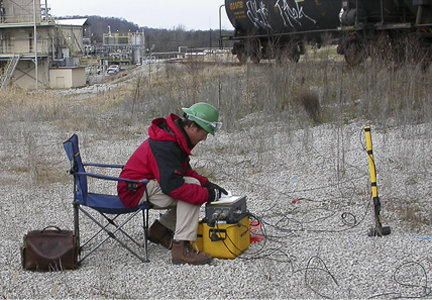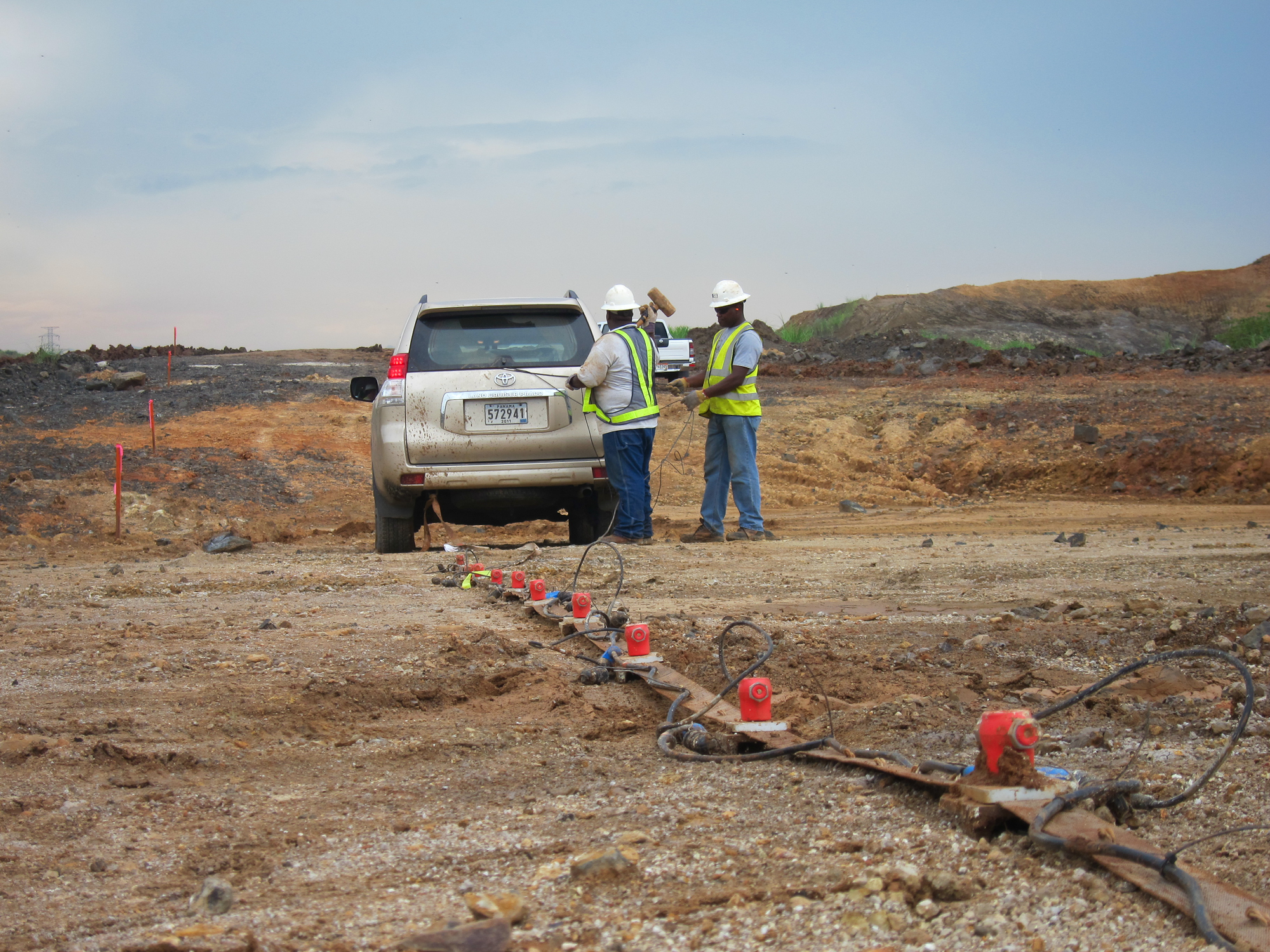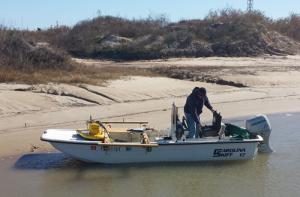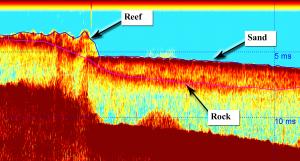Scanning Beneath the Seafloor

GeoView employs three methods for studying the geologic strata and objects buried beneath the seafloor. These include Sub-bottom profiling, Marine Seismic Refraction and Marine Seismic Reflection. GeoView owns and operates an Edgetech sub-bottom profiler. It generates a swept frequency source to produce a high resolution image of the sub-bottom at penetration depths up to 50 meters. It is useful for mapping sediment thickness, karst surveys, conducting scour studies, mapping shallow geologic strata and mapping buried utilities and other submerged structures. The source and receiver are housed in a single towfish, allowing data to be collected even in very shallow water depths. The depth of penetration can be limited by the grain size of the sediment and porosity of the rock. For freshwater sub-bottom profiling, a ground penetrating radar system can also be used.
 Marine seismic refraction is used to map geologic strata and to obtain compressional wave velocities of the sediment and rock. The system utilizes an airgun to produce the seismic wave and a 24-channel seismograph and hydrophone streamer to record the travel times. Seismic reflection utilizes similar equipment, but with a much shorter duration between shots and a higher source frequency. Seismic reflection data generally has a greater depth of penetration and resolution and is therefore useful in mapping geologic strata and identifying fault locations. GeoView teams with Spotlight Geophysical Services for marine Seismic Refraction and Marine Seismic Reflection Surveys.
Marine seismic refraction is used to map geologic strata and to obtain compressional wave velocities of the sediment and rock. The system utilizes an airgun to produce the seismic wave and a 24-channel seismograph and hydrophone streamer to record the travel times. Seismic reflection utilizes similar equipment, but with a much shorter duration between shots and a higher source frequency. Seismic reflection data generally has a greater depth of penetration and resolution and is therefore useful in mapping geologic strata and identifying fault locations. GeoView teams with Spotlight Geophysical Services for marine Seismic Refraction and Marine Seismic Reflection Surveys.
 The data from can be corrected for tides and wave action and can be output in most common coordinate systems and vertical datums. The data can be presented in AutoCAD, GIS and/or table formats. With both small and large survey vessels, GeoView has the ability to conduct both inshore and offshore projects.
The data from can be corrected for tides and wave action and can be output in most common coordinate systems and vertical datums. The data can be presented in AutoCAD, GIS and/or table formats. With both small and large survey vessels, GeoView has the ability to conduct both inshore and offshore projects.
Example of sub-bottom data (click to enarlge)
Preparing to Collect Sub-Bottom Data within a River
Example of sub-bottom over a Reef (click to enarlge)











